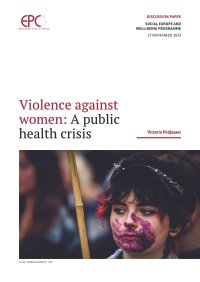UNITED STATES. DEPARTMENT OF HOMELAND SECURITY
From the document: "On November 14, 2023, Secretary Mayorkas tasked the HSAC [Homeland Security Advisory Council] with forming a subcommittee on Combatting Online Child Sexual Exploitation and Abuse (CSEA) to develop the DHS strategy to protect community stakeholders from incidents of CSEA, consistent with the Department's authorities. To address these findings, the subcommittee makes the following six recommendations to DHS: 1. Establish, resource, and empower an office within DHS to lead Departmental efforts to counter online CSEA and form a center within DHS to organize a whole-of-government approach to addressing online abuse and exploitation. 2. Leverage existing tools; develop and advocate for policy solutions. 3. Increase participation in the combatting of CSEA by the major platform vendors. a. Build a uniform technology platform with a public private partnership for monitoring and reporting on all investigations, past and present, open and closed. This platform would be used as the system of record for all investing agencies. b. Reframe and realign incentives to partnership through legislative actions. 4. Prioritize vicarious trauma and workplace well-being support for law enforcement, civil society employees, and other frontline staff who encounter CSEA material in their work. 5. Bolster and sustain DHS external engagement for the Know2Protect Campaign by expanding resources and outreach with the Department of Education (ED). 6. Lead engagement with economic and regulatory federal partners to increase the interdepartmental approach to combatting CSEA."
HOMELAND SECURITY ADVISORY COUNCIL. COMBATTING ONLINE CHILD SEXUAL EXPLOITATION AND ABUSE SUBCOMMITTEE. 2024. 23p.














